NSF launches Engineering Research Visioning Alliance as force multiplier for high-impact research
Apr 7, 2021, 11:35 AM
The National Science Foundation (NSF) Directorate for Engineering today launched the Engineering Research Visioning Alliance (ERVA), the first engineering research visioning organization of its kind. Its founding partners are members of the Big Ten Academic Alliance; the Established Program to Stimulate Competitive Research (EPSCoR)/Institutional Development Award (IDeA) Foundation (EIF); and the University Industry Demonstration Partnership (UIDP).
America’s economic competitiveness is tied directly to the pace of scientific and technological discovery, which requires sustained, long-term support as well as agility. To help the United States stay at the forefront of research and innovation — and maintain its leadership in the global economy — the National Science Foundation (NSF) Directorate for Engineering today launched the Engineering Research Visioning Alliance (ERVA), the first engineering research visioning organization of its kind.
Engineering research profoundly impacts our daily lives in a variety of areas, from improved vaccine distribution to better smartphone cameras to the recent Mars rover landing. ERVA brings the engineering community together to envision high-impact solutions to society’s grand challenges and to spark new research directions for a more secure and sustainable world.
ERVA’s structure is designed to coalesce the engineering stakeholder community to identify and develop bold new fundamental research directions. Its founding partners are members of the Big Ten Academic Alliance; the Established Program to Stimulate Competitive Research (EPSCoR)/Institutional Development Award (IDeA) Foundation (EIF); and the University Industry Demonstration Partnership (UIDP).
ERVA was created to provide the engineering community with a process for identifying bold and societally impactful engineering research directions that will place the U.S. in a leading position to realize a better future for all. It is an engaged, inclusive, multilayered partnership, providing a truly diverse array of voices with the opportunity to impact national research priorities.
Engineering has the power to transform people’s lives, especially when it brings to bear a diversity of knowledge, perspectives, and experience to solve important problems,” says NSF Assistant Director for Engineering Dawn Tilbury. “With NSF’s support, the Engineering Research Visioning Alliance will enable the engineering community to mobilize and make a difference in our country’s future.”
Funded with a five-year, $8 million award from the NSF, the initiative convenes, catalyzes and enables the engineering community to identify nascent opportunities and priorities for engineering-led innovative, high-impact, cross-domain, fundamental research that addresses national, global and societal needs.
“When engineers come together behind a big challenge, we create amazing discoveries and innovations that can lead to exciting new fields,” says Tilbury. “Through ERVA, NSF wants the engineering community to come together to find ideas that will unite us, develop roadmaps for cutting-edge research agendas, and lead to game-changing impacts on our world.”
ERVA builds connectivity among government, academic, industry, community, professional society and public sector stakeholders, empowering the engineering research community to speak with a unified voice.
“ERVA is an incredible, once-in-a-lifetime opportunity to be a part of something truly transformative,” notes Dorota Grejner-Brzezinska, Ph.D., ERVA’s principal investigator (PI) and senior associate vice president for research-corporate and government partnerships at The Ohio State University, a member of the Big Ten Academic Alliance. “It enables the engineering community to unify under the common theme of working together to address society’s greatest challenges.”
ERVA’s co-PIs are Anthony Boccanfuso, Ph.D., president and CEO of UIDP; Barry W. Johnson, Ph.D., the L.A. Lacy Distinguished Professor of Engineering at the University of Virginia; Charles Johnson-Bey, Ph.D., senior vice president at Booz Allen Hamilton; and Edl Schamiloglu, Ph.D., distinguished professor of electrical and computer engineering and associate dean for research and innovation for the school of engineering at the University of New Mexico.
A distinguished 10-member Advisory Board provides oversight, and a 35-member Standing Council provides critical input for visioning activities. ERVA stakeholders from academia, industry, government, professional societies and foundations, and the general public will be invited to participate on topic-based task forces and to offer insight for new research directions.
Professional societies and associations with aligned goals have a role to play in ERVA and may become ERVA Affiliate Partners. Individuals are also invited to participate as ERVA Champions, especially those with an interest in the future of engineering research, including the general public; students at all levels; researchers, faculty and deans in small and large college engineering programs; and interested parties in industry, from engineers to CEOs.
To get involved with ERVA and learn about its upcoming visioning activities at www.ERVAcommunity.org and follow @ERVAcommunity and the hashtag #ERVAcommunity on LinkedIn, Facebook and Twitter.
